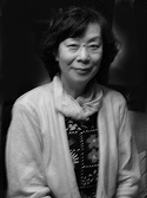
Moto Hagio is a Japanese manga artist. Regarded for her contributions to shōjo manga, Hagio is considered the most significant artist in the demographic and among the most influential manga artists of all time, being referred to as the "god of shōjo manga" by critics.

A, A Prime is a manga anthology of short stories written and illustrated by Moto Hagio. Originally spelled A, A′, it was first published in November 1984 by Shogakukan and brings together three science fiction stories published between 1981 and 1984. In addition to the titular short story which appeared in Akita Shoten's Princess, the anthology includes "4/4 [Quatre-Quarts]" and "X+Y"—both of which were serialized in the Shogakukan magazine Petit Flower. English translations of the stories, which first appeared separately in Viz Media's Manga Vizion from 1995 to 1996, were collected by the publisher in 1997.
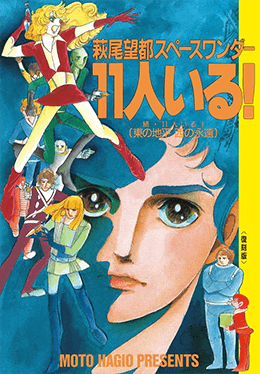
They Were Eleven is a Japanese science fiction manga series written and illustrated by Moto Hagio. It was serialized in three issues of Shogakukan's Bessatsu Shōjo Comic magazine in 1975. The following year, it won the 21st Shogakukan Manga Award in the combined shōjo and shōnen category. The series has inspired a live-action television film, an anime film, multiple stage plays, and an audio drama CD. It also inspired a sequel manga series, Zoku Jūichinin Iru! Higashi no Chihei, Nishi no Towa, serialized in Bessatsu Shōjo Comic magazine from 1976 to 1977. They Were Eleven was originally licensed in English by Viz Media and published in the manga anthology Four Shōjo Stories in 1996. The series and its sequel have been licensed by Denpa for a new English-language release in 2022. The anime film was originally licensed in English by Central Park Media, but it was discontinued in 2004.

Kaze to Ki no Uta is a Japanese manga series written and illustrated by Keiko Takemiya. It was serialized in the manga magazine Shūkan Shōjo Comic from 1976 to 1980, and in the manga magazine Petit Flower from 1981 to 1984. One of the earliest works of shōnen-ai, Kaze to Ki no Uta follows the tragic romance between Gilbert Cocteau and Serge Battour, two students at an all-boys boarding school in late 19th-century France.

The Year 24 Group is a grouping of female manga artists who heavily influenced shōjo manga beginning in the 1970s. While shōjo manga of the 1950s and 1960s largely consisted of simple stories marketed towards elementary school-aged girls, works by members of the group significantly developed shōjo manga by expanding it to incorporate new genres, themes, and subject material. Narratives and art styles in shōjo manga became more complex, and works came to examine topics such as psychology, gender, politics, and sexuality. Manga produced by the Year 24 Group brought the shōjo category into what scholars have described as its "golden age".
Toshie Kihara is a Japanese manga artist and a member of the Year 24 Group. She made her professional debut in 1969 with the short story Kotchi Muite Mama! in Bessatsu Margaret. She is best known for her manga series Mari to Shingo, serialized from 1977 to 1984 in LaLa, which follows a romance between two young men at the start of the Shōwa era. Several of her manga series have inspired musicals performed by the all-female Takarazuka Revue, including Angélique, an adaptation of the novels by Anne Golon; Torikaebaya Ibun, an adaptation of the Heian era tale Torikaebaya Monogatari; and Ōeyama Kaden.

The Heart of Thomas is a 1974 Japanese manga series written and illustrated by Moto Hagio. Originally serialized in Shūkan Shōjo Comic, a weekly manga magazine publishing shōjo manga, the series follows the events at a German all-boys gymnasium following the suicide of student Thomas Werner. Hagio drew inspiration for the series from the novels of Hermann Hesse, especially Demian (1919); the Bildungsroman genre; and the 1964 film Les amitiés particulières. It is one of the earliest manga in the shōnen-ai genre.

The Poe Clan is a Japanese manga series written and illustrated by Moto Hagio. It was initially serialized in the manga magazines Bessatsu Shōjo Comic and Shūkan Shōjo Comic from 1972 to 1976, while a revival of the series has been serialized in Flowers since 2016. The Poe Clan is composed of a series of non-chronological stories set between the 18th and 21st centuries that follow the life of Edgar Portsnell, a teenage vampire.
Minori Kimura is a Japanese manga artist. Critics and scholars often count her among the Year 24 Group, a nebulous group of female artists considered to have revolutionized shōjo manga in the 1970s.
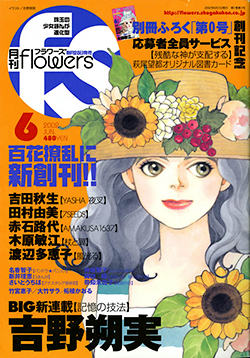
Flowers (フラワーズ) is a monthly Japanese josei manga magazine published by Shogakukan and issued on the 28th of every month.
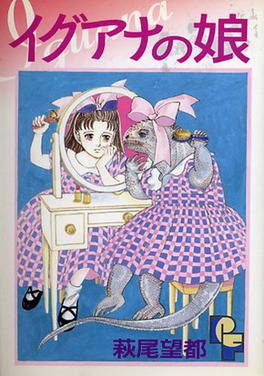
Iguana Girl is a 1992 manga written and illustrated by Moto Hagio. A 52-page one-shot originally published in the manga magazine Petit Flower, the story follows a mother who rejects her daughter because she perceives her as an iguana; the daughter internalizes this rejection, and in turn comes to regard herself as an iguana.
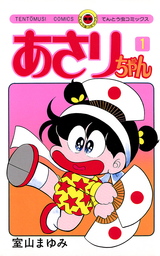
Asari-chan (あさりちゃん) is a Japanese shōjo slice of life manga series by Mayumi Muroyama. With a total circulation of 28 million copies, it is one of the best-selling manga. It was adapted into an anime television series and an anime film. The TV series was produced by Toei Animation a subsidiary of Toei Company, and directed by Kazumi Fukushima. The anime follows Asari, a normal but stupid elementary school fourth-grade girl who does not get along with her family.

Orange is a Japanese romance manga series written and illustrated by Ichigo Takano, aimed at the shōjo and seinen demographics. The series follows high schoolgirl Naho Takamiya, who receives a letter written by herself ten years in the future. She is tasked with keeping an eye on Kakeru Naruse, a transfer student whose mother committed suicide on his first day of school. It was first serialized in 2012 in Bessatsu Margaret manga magazine and later in Monthly Action. It has been compiled into 7 volumes as of April, 2022. Its chapters are published online in English by Crunchyroll and in print by Seven Seas Entertainment. It is also published in France by Akata, in Poland by Waneko, and in Spain by Ediciones Tomodomo. A live action film adaptation of the same name was released on December 12, 2015. An anime television adaptation started to air in July 2016. A spin-off to the manga began serialization on March 25, 2016, in the Monthly Action magazine published by Futabasha. An anime theatrical film, titled Orange: Future, premiered in Japan on November 18, 2016.

The Rose of Versailles, also known as Lady Oscar and La Rose de Versailles, is a Japanese manga series written and illustrated by Riyoko Ikeda. It was originally serialized in the manga magazine Margaret from 1972 to 1973, while a revival of the series was published in the magazine from 2013 to 2018. The series is a historical drama set in the years preceding and during the French Revolution. Using a combination of historical personages and original characters, The Rose of Versailles focuses primarily on the lives of two women: the Queen of France Marie Antoinette, and Oscar François de Jarjayes, who serves as commander of the Royal Guard.

Requiem of the Rose King is a Japanese manga series written and illustrated by Aya Kanno. Loosely based on the Shakespearean plays Henry VI, Part 3 and Richard III, the series follows an intersex version of Richard III during the tumultuous Wars of the Roses (1455–1487) period in English history. The manga was serialized in Akita Shoten's Monthly Princess magazine from October 2013 to January 2022, with its chapters collected into 17 bound volumes as of December 2021. It is licensed in English by Viz Media. It has inspired three drama CDs, two spin-off manga series, an original novel, a stage play, and an anime television series adaptation produced by J.C.Staff, which aired from January to June 2022.
Masako Yashiro is a Japanese manga artist. An artist of both shōjo manga and shōnen manga, her 1970 manga series Secret Love has been described as the first manga in the yuri genre.

Star Red is a Japanese science fiction manga series written and illustrated by Moto Hagio. It was serialized in Shogakukan's manga magazine Shūkan Shōjo Comic from 1978 to 1979.

Sunroom Nite is a Japanese manga one-shot written and illustrated by Keiko Takemiya. It was originally published in the December 1970 issue of the manga magazine Bessatsu Shōjo Comic under the title Yuki to Hoshi to Tenshi to.... It is the first work in the shōnen-ai genre, a genre of male-male romance manga aimed at a female audience.
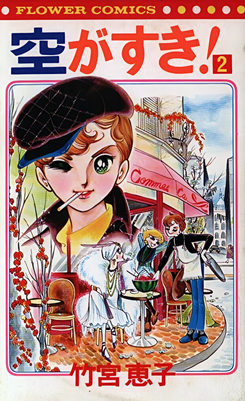
Sora ga Suki! is a Japanese manga series written and illustrated by Keiko Takemiya. It was originally serialized in the manga magazine Shūkan Shōjo Comic in two parts: from March to May 1971, and from August to October 1972. It was later published as a collected edition by Shogakukan, and was the first manga series by Takemiya to be published in this format.

Hanshin: Half-God is a Japanese manga one-shot written and illustrated by Moto Hagio, originally published in the January 1984 issue of the manga magazine Petit Flower. The manga focuses on Yudy and Yucy, identical conjoined twins who are attached at the hip. A theatrical adaptation written by Hagio and playwright Hideki Noda was staged in 1986.



















